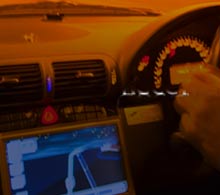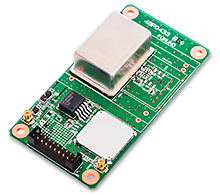Articles for ITS market Automobile Distribution Revolution and DCM (Data Communication Module)
Toyota, 5 years ahead of sales for all models
In June this year, there was a shock in the Japanese automobile industry. Toyota announced that it will sell all Toyota models at all Toyota dealers nationwide five years ahead of schedule.
The simultaneous sale of all models means that the same model is sold at the Toyota, Toyopet, Corolla, and Netz stores, which are the four current Toyota dealer networks. The initial plan was announced at the nationwide Toyota Dealer Management Conference held in October 2018. In the Tokyo area, four dealers were eliminated on March 31, 2019 and operations were integrated as Toyota Mobility Tokyo from April 1.
Since Toyota headquarters has a capital participation in dealers in the Tokyo area, they were able to move quickly to a new sales system across the country. The problem is the reorganization of business outside the Tokyo area. Most of them are prominent companies in various regions that have franchise contracts from Toyota headquarters.
Toyota told them that they would like them to complete the sale of all models in all stores between 2022 and 2025. That's what we announced in October 2018. In the second half of June 2019, just eight months later, Toyota notified Toyota dealers in Japan that it will be completed by May 2020. Basically, it will be five years ahead of schedule. Not only Toyota-related personnel but also Japanese automakers cannot hide their surprise of such a bold decision.
The reason for 5 years advance
Then why was it five years ahead of schedule? Toyota has not disclosed the details, but when talking to Toyota officials, there are many voices saying "The dealer network has a sense of crisis about future business and wants to change to the new sales system as soon as possible."
Domestic sales are at the peak of the overall market with mini vehicles accounting for over 40% of the market. In terms of sales performance mini cars dominate the top sales ranking while Prius and Aqua which were once the sales leaders for Toyota are sluggish.
On the other hand, in terms of manufacturing, high-precision, high-priced electronic components are being standardized. These include a brake system for reducing impact damage called automatic brakes and an accelerator / brake depressing device.. As for collision safety, design of vehicle bodies for protecting pedestrians and airbags that inflate outside the vehicle in the event of a collision are becoming more popular. Due to these various new functions it has become a major challenge for automobile manufacturers to respond to the rising manufacturing costs.
Measures include simplifying the manufacturing process by limiting the design requirements by promoting the common use of vehicle bodies and engines. Furthermore regarding the sales system, moves to reorganize a large-scale sales system is likely to accelerate. Toyota became a pioneer.
”DCM (Data Communication Module)” drives the technical background of dealer reorganization
DCM is one of the reasons why Toyota was able to move forward with dealer reorganization one step ahead of other companies.
In August 2018 president Akio Toyoda explained the necessity of DCM at “Connected Day” held at the “mega web” of Toyota's commercial facility in Tokyo. DCM is an in-vehicle communication device. It sends CAN (controller area network) information connected to various in-vehicle ECUs (control computers) to Toyota's dedicated cloud service once a minute.
Starting with the new Crown and new Corolla Sport launched in 2018, it will be installed on all Toyota vehicles as needed.
So how does DCM relate to dealer restructuring?
The keyword is “elimination of separation, production and sales”. Initially the auto industry focuses on the planning, development, and production of vehicles but auto manufacturers have no direct relationship with the subsequent sales. Except for some manufacturers such as Tesla in the US, there are no cases where automakers have direct dealers in the global market. In other words it is sales by the franchise method.
In Japan, Toyota's direct management ratio is about 10% while Subaru and Mazda have a direct management ratio of over 50% which is a unique industrial structure worldwide.
However, regardless of whether these dealers are directly managed or franchised automakers rarely come into direct contact with post-sales vehicle data. While it may seem that a directly-managed dealer often touches the customer's vehicle data, in reality the dealer is only involved in the minimum vehicle information necessary during repairs. The ownership of the data obtained therefore belongs to the dealer and is often not shared with automakers except for recalls.
In this way, automakers are in a wholesale business with dealers and automakers therefore do not have direct access to customer vehicle information. The reason has been influenced by the contract terms regarding customer data between automakers and dealers, including the relationship with the performance of communication equipment and communication infrastructure.
Toyota reviewed the terms of this contract at the time of DCM commercialization. As a result the four dealer networks have been reorganized.
As Toyota dealers change their relationship with Toyota headquarters in the future it is necessary to step into a new business model linking DCM with Toyota headquarters. This includes existing businesses such as new car sales, used car sales and vehicle repairs,
The automobile distribution revolution is in full swing in Japan, ahead of the worldwide automotive industry. Car dealers have now entered the Sengoku (survival) period.
Writer introduction

Mr. Kenji Momota Automotive journalist
His major is the world automotive industry and he is also familiar with the energy industry, IT and the aging society problem as the related fields. He acts around the world based in Japan and USA and writes for the general magazines, the technology journals and the automotive related media etc.
He is also commentator of motor race and world's motor show on TV program based on his career of the driver of Indy Racing League and NASCAR. In recent years, he has been covering about a paradigm shift from developed countries to developing countries, the motorized vehicle like EV and the telematics.
FURUNO ITS Journal
Click here for the latest articles after 2022 (in Japanese)2022
- The "realistic" self-driving roadmap shown by the Japanese government and a hands-on report on the latest Subaru EyeSight X
- Will FCVs (Fuel Cell Vehicles) Become Popular? ~New Movement in Toyota and Honda~
- The 'Complete' online sales of new cars start in Japan. Will this new way of buying cars take root?
- Many Firsts! On-Site Report from Tokyo Auto Salon 2022 - The author, who knows what goes on behind the scenes, looks back on 40 years of history. -
2021
- "Moving toward zero traffic fatalities for four-wheeled and two-wheeled vehicles globally in 2050" ~Experience on Honda's latest safety technologies~
- Tsuneishi Shipbuilding's building and DX, an exclusive visit to the main factory
- Japan's Smart City: New Moves toward Practical Use
- When will self-driving buses (service cars) be put to "full-scale" practical use?
- Utilization vehicle data during disasters
- Toyota-led Connected Technology to Transform Commercial Vehicle Business -From light trucks to large trucks and buses-
- Toyota enters the connected car "Personalization" business
- Japanese automakers' carbon-neutral strategies swept up in ESG investment
- Drive experience of the latest autonomous vehicle models and advanced driving support systems
- Will carbon neutrality accelerate the trend to strengthen LCA (Life Cycle Assessment)?
- Semiconductor shortage exposes realities of the automotive industry
- Online Autonomous Driving Contest Enhancing development of Human Resources
2020
- What happens to CASE when gas cars are banned in Japan?
- When will Flying Cars be launched?
- Expectation vs. reality:Autonomous Driving in Japan
- V2X, Becoming increasingly important in autonomous driving
- Technology of Subaru “EyeSight X”
- Lifestyle-oriented French cars gain popularity in Japan
- Human-oriented smart cities are wanted
- MaaS and CASE, how would automotive industry change after COVID-19?
- The beginning of virtualization era, triggered by COVID-19
- Trend of EV shift and consumer demands
- TOYOTA Press conference about ADAS - Releasing algorithm for "sudden acceleration suppression during attempted sudden acceleration" free of charge -
- The Japanese automotive industry in 2020 - 3 turning points -
- "Using a smartphone while driving" and "Level 3 automated driving"
2019
- Motor show business model is at a turning point - Tokyo Motor Show Report -
- Commercialization and monetization of MaaS - ITS World Congress Singapore Report -
- Android Automotive pays attention to V2X - Report from the Frankfurt Motor Show 2019 in Germany -
- Automobile Distribution Revolution and DCM (Data Communication Module)
- Connected business potential and newly proposed "eMaaS" by Honda
- 5G services for practical use are multiplying
- Connectivity technologies attracting attention due to frequent traffic accidents
- Shanghai Motor Show report -SUV, EV, Automated car & 5G-
- Drone Business roadmap and updates to Michibiki (Quasi-Zenith Satellite System)
- MaaS (Mobility as a Service) "town development." Full-scale promotion for a national project
- CES organizer states "Data Period in 2020s." Transformation of the Automotive Industry in CES, US "-CES2019 Report-"
- "Return to Origin" directed towards the age of change, automatic operation and connectivity
2018
- New proposal for Private Car Automated Driving Level and other Hot 5G Technology Topics
- Standardized EV charging infrastructure concerns in Europe, US, Japan and China - Kobe EVS 31 field report -
- Touring a pure car carrier and a test drive of the latest hybrid car
- Planning stage products are exhibited at the newly established visualized mobility service "TOYOTA MOBILITY SHOWROOM".
- Potential “Community Car-share” program promoted by local residents
- CES Asia Report 2108
- Companies attempt new Vehicle-to-Infrastructure communications, including traffic volume measurements and vehicle positioning. -ITS Asia Pacific Forum in Fukuoka-
- Geneva show in Switzerland. Flying cars and MaaS (Mobility as a Service) were hot topics.
- EV (Electric Vehicle) proposals by country
- MaaS competition through service mobilization, M & A and technical field collaboration is accelerating. - The CES 2018 Report -
2017
- Big data’s initiative and fight for the automotive industry. Cooperation among companies becomes increasingly important.
- Connected car and road-to-vehicle communication automatic operation
- ETC (Electronic Toll Collection) and ETC2.0. Current situation and projected future
- Rapid development of sharing economy
- Germany is first to recognize level 3 automated driving
- ITS EU 2017 Field Reports -Automatic Operation and the eCall-
- From Infotainment to ITS, the competitive area is spreading in the car big data industry.
- GTC (GPU Technology Conference) Report and the de facto standardization of AI (artificial intelligence)
- Renesas' new challenge! "e-AI Solution" and "Renesas Autonomy"
- The Automobile industry is shifting from a manufacturing industry to a service industry.
- The movement toward accident countermeasures for aging drivers in Japan
- Fusion of ride sharing and fully automated driving is advancing in the USA.
2016
- Overview of the Quasi-Zenith Satellite System (QZSS) and advancements toward full-scale practical use including the Tokyo Olympic Games - G-space EXPO 2016 report-
- Japan’s automated driving project "SIP-adus" will be a large demonstration experiment.
- The International Home Care & Rehabilitation Exhibition. There were many car manufactures with exhibits booths at this show.
- Japanese car manufacturers starting to concentrate on strengthening the ADAS system
- A new movement of legislation for autonomous cars
- Cyber Security and “AGL”, the new OS for automotive are hot topics in the connected car industry
- “High precision 3D map” the key future of autonomous car and pedestrian dead reckoning
- Chinese “BAT” is accelerating their business in the EV (Electric Vehicle) market
- Tesla's original connection to Taiwan and the new transportation system technologies.
- "The main topic" of the Geneva Motor Show was how to strengthen "pedestrian protection"
- The probe data business is getting more competitive
- Reporting directly from the 2016 CES show "Data services will soon become the main revenue source of automotive industry"
2015
- Do the automated driving systems need the GNSS (Global Navigation Satellite System) ?
- ETC Version 2.0 is coming soon. A new service was announced at the Tokyo Motor Show and the possibility that is could be used as a device for older drivers.
- "Connected Horizon" and "eHorizon". Germany's leading parts supplier accelerates strengthening of "Big Data" for business



 Toyota dealers in Shizuoka
Toyota dealers in Shizuoka Illustration of Toyota's original cloud service using DCM Source: TOYOTA MOTOR CORPORATION
Illustration of Toyota's original cloud service using DCM Source: TOYOTA MOTOR CORPORATION GPS/GNSS Receiver&Chips and Modules (positioning and timing)
GPS/GNSS Receiver&Chips and Modules (positioning and timing)